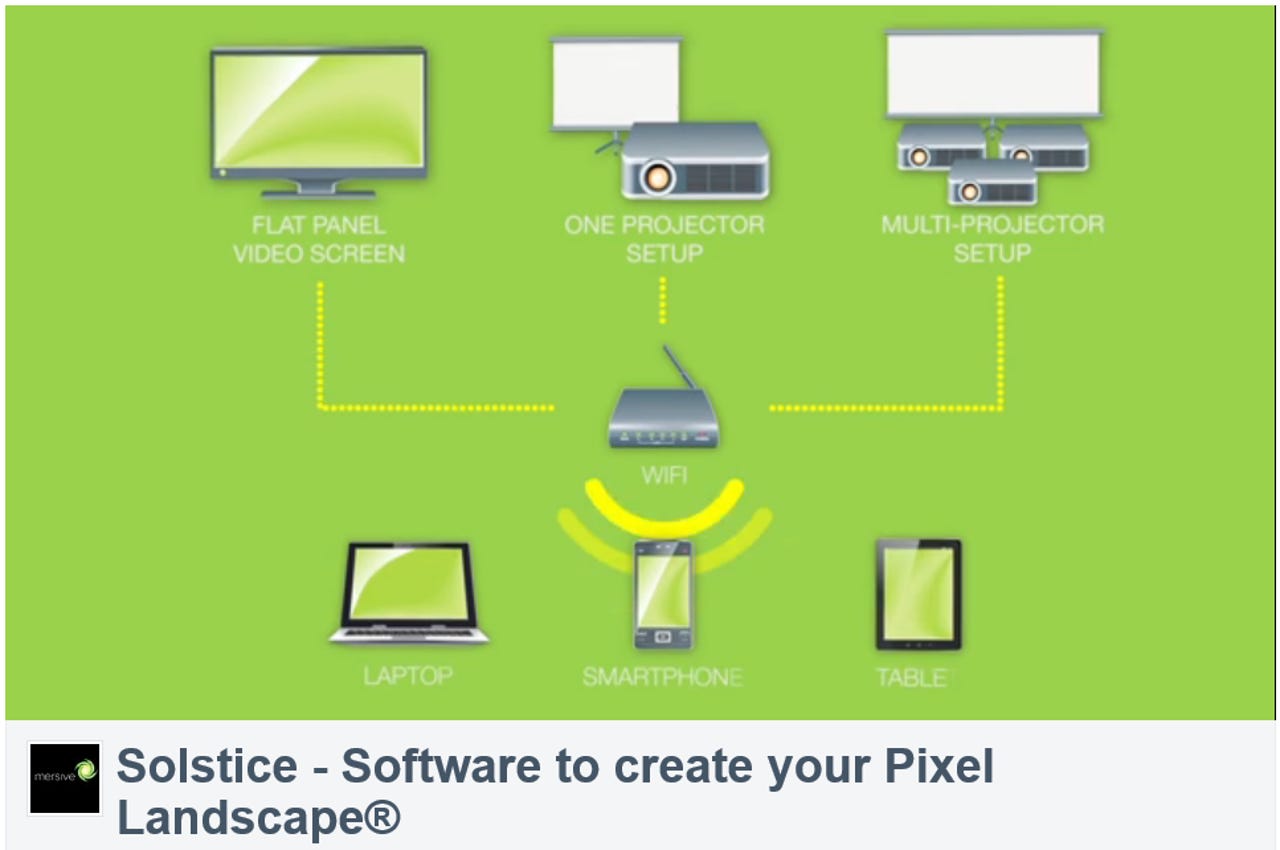Solstice wireless display software does more than cut the cord

There is no shortage of wireless display technologies. Apple has AirPlay, Intel's WiDi is included in many laptops, AMD just announced its own version called Screen Mirror, and the Wi-Fi Alliance is pushing Miracast (used in many Android devices). WiGig, or 802.11ad, is a fast, short-range technology that can replace the DisplayPort or HDMI cables that connect PCs to displays (Dell recently began shipping a Wireless Dock and a Latitude laptop with 802.11ad).

All of these are basically cable-cutting technologies. In general, they are designed to take what you are watching (or doing) on a smartphone, tablet or laptop and push it to a TV or other external display. Last week, I got a look at a more ambitious solution designed to allow multiple users to share a large display using 802.11n WiFi or wired Ethernet. Mersive's Solstice software virtualizes the display into a single "Pixel Landscape" so that multiple users can display content from their mobile devices or laptops.
The Denver-based startup first demonstrated the software at DEMO last fall, but the Windows and iOS apps are now available for download (an Android version will be available by the end of June). The client software is free, but to use, it you'll also need the server software on the Windows 7 host PC that is physically connected to the display or projector. The server license lists for $3,500, but Mersive will let you try it out for 30 days.
Microsoft has been talking a lot recently about using PCs with large, touch-enabled displays (based on technology that it acquired from Perceptive Pixel), but Mersive founder and CTO Christopher Jaynes argues that a better approach is to use the touch interfaces on the devices we are already carrying to control existing displays and projectors, which are often under-used. With Solstice, multiple users can walk into a conference room or classroom, easily "discover" the external display, and simultaneously display content from their smartphones, tablets, and laptops.
The Windows client has buttons that let you share windows by opening apps such as Excel or PowerPoint, and dragging a window across what you want to display; share one or more pictures from a local folder; or share the entire desktop, which mirrors your device's entire display. Mersive uses a blogging metaphor for this, referring to each of the items that you "publish" to the external display as a post. Since many devices can be connected, each posting multiple items, Solstice also lets you control the external display. You can choose to display only one post, view all posts, split the screen up into four equal-size windows, flip through the posts like a book, or use a free-form mode to move posts around and resize them.
A Media Panel at the bottom shows thumbnails of everything that has been published and lets any user designate which ones are currently visible on the display. Solstice doesn't support group editing — you still control whatever you post — but everyone can see any edits you make in real-time and anyone can choose which posts to show, move them around on the pixel landscape, or resize them, even if they were posted by someone else. The iPad app is a bit more limited, but it is very similar. The client software also links with online storage services (Box, Dropbox, Google Drive, iCloud, and SkyDrive), as well as Facebook, Flickr, and Instagram, so you can take files from the cloud and put them on the big display.
Solstice seems relatively easy to use, but it isn't for everyone. It is sold directly to corporate IT departments or through resellers (Mersive said that it is working with many Fortune 100 companies). And some of the features are overkill for those who just want to get rid of cables and dongles. But for organizations that can really use this sort of collaboration, Solstice is an innovative way to leverage the gadgets we already carry and existing displays to do much more.